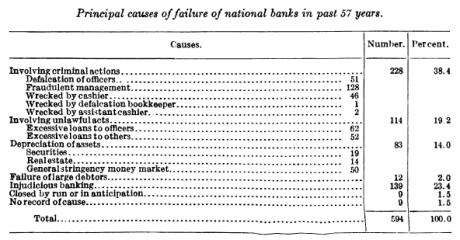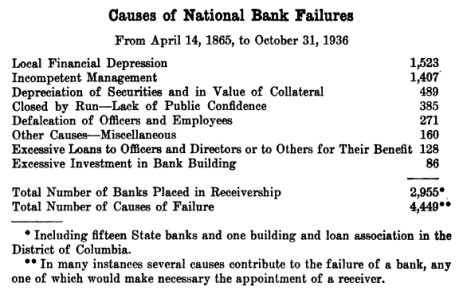Over at the Austrian Economics Center blog, Finbar Feehan-Fitzgerald has an entry on concurrent currencies, with special attention to Friedrich A. Hayek’s plan and Milton Friedman’s skeptical stance on it. Kurt Schuler over at freebanking.org provides further discussion.
In the words of Finbar Feehan-Fitzgerald, Friedman was skeptical because of the cost of switching currencies:
It was the view of Friedman, that network effects and/or switching costs would hamper the emergence of a new monetary system in general and prevent Hayek’s system from operating as desired in particular.
As evidence, he offers this passage from Friedman (1984, p.44):
Both German marks and Swiss francs have for many years maintained their purchasing power better, and with less fluctuations, than U.S. dollars. Many residents of the U.S. hold German marks and Swiss francs, or claims denominated in those currencies, as part of their portfolio of assets. But, with perhaps rare exceptions, only those who engage in trade with Germany or Switzerland, or travel to those countries, use the currencies as a medium of circulation.
It is true that Hayek and Friedman seem to have a different understanding of these costs. Take this passage from Hayek (1984, p. 30), the essay just before Friedman’s in the same book:
There is no doubt that it will take people some time to adjust themselves to such a new situation, but it is certain that it would not really take very long. When you watch what is happening in a major inflationary period, you see how ingenious people are in finding alternatives to an inflating currency which they are forced to use. I do not think it would take them long to learn to follow the quotations on the currency markets which would come into being, in order to inform themselves as to which currency they could trust to be a stable money and which not.
However, when reading this passage, it is good to keep in mind that Hayek had a fairly grim expectations of future monetary policies. It is particularly visible in this interview from 1975:
I’d say it’s almost a hopeless proposition for the government to pursue a sensible policy as long as the public is obsessed with the idea that there’s a cheap way of curing unemployment. As an economist I can only argue this is a mistake.
But as the people believe — and I think the great majority of people do believe — that the government has the power to eliminate unemployment quickly and lastingly, the government won’t be able to stop the inflationary process.
[…]
I’m fairly certain […] that attempts at so-called pump priming will probably sooner lead to acceleration of the price rise, rather than an increase in employment, and people ill demand control of the price rise. The government will clamp on controls and pump more money into circulation, which will have the disappointing effect of not creating much employment.
It seems that Hayek did not underestimate the costs of switching one currency to another with regards to their general acceptability, but that he was anticipating some sort of central bank engineered doomsday scenario that would have pushed these opportunity costs way down. I don’t believe it is fair to say that Hayek believed networks and switching costs were low, while Friedman thought they were high. Indeed, if you read a passage in Friedman (1984, p. 44) a few lines above the one cited by Finbar Feehan-Fitzgerald, Friedman himself admits that under much worse monetary management such costs might be rendered less important (emphasis mine);
I conjecture that, as with a private gold standard, even greater freedom for the issuance of competitive moneys would not in fact lead to the emergence of any such a widely used money in the U.S. (or other major countries) unless U.S. monetary management becomes far worse than it has been.
Again, p. 46:
There is little basis in experience for expecting any widely used private moneys to emerge in major countries unless governmental monetary management becomes far worse than it has been in the post-World War II period. And there is little basis in experience to expect any such extreme degeneration in monetary management except as the aftermath of a major military conflict.
Moreover, the main problem Friedman has with plurality of emission is not so much network and switching costs or that stable purchasing-power is not enough to make a private currency attractive, but a technicality with Hayek’s plan (at least in the essay Finbar Feehan-Fitzgerald cites, for other reasons Friedman has opposed competing currencies see Selgin 2008). He believes private money will never be good money because the private sector cannot supply assets denominated in purchasing-power to back the notes. Indeed, Hayek’s model rests on the contention that “if people were wholly free to choose which money they wished to use in their daily transactions, it would soon appear that those did best who preferred a money with a stable purchasing-power” (Hayek 1984, p. 33). In Friedman’s view, only government can do this, and it would make Hayek’s money “in essence government, not private money” (p. 45).
In the words of Friedman (1984, p. 43):
I may say that I am all in favour of the changes in legislation he proposes which would give private banks the greatest latitude in the way of offering substitutes for money. But I do not predict the same outcome as he does. I am very much less optimistic than he is that such a system would lead to a money of of constant purchasing-power and of high quality. The fundamental problem is that in the present circumstances of the world there are no assets which banks could acquire to match purchasing-power obligations. Let a bank undertake to pay out money which will have a fixed purchasing-power, how can it be sure to guarantee that result? Only if it can match those liabilities with assets which can be assured of fixed purchasing power. That will be possible when and only when governments in turn issue purchasing-power securities.
Most of the essay is then dedicated to examples of plans aiming at stable purchasing-power assets that have failed.
While Finbar Feehan-Fitzgerald’s essay is a very interesting discussion of network effects and switching costs, and provides a wonderful application of these issues to the Somali case, I do believe it might be misrepresenting both Hayek’s view on the topic and Friedman’s skepticism of competing currencies.
——–
Friedman, Milton. 1984. “Currency Competition: A Sceptical View”. In Currency Competition and Monetary Union, ed. Pascal Salin, pp. 59-73. The Hague: Martinus Nijhoff.
Hayek, Friedrich A. June 1975. “Monex International Presents an Exclusive Interview With Nobel Laureate Dr. Friedrich A. von Hayek”. Gold & Silver Newsletter, p. 1-5. Monex International, Ltd.
Hayek, Friedrich A. 1984. “The Future Unit of Value”. In Currency Competition and Monetary Union, ed. Pascal Salin, pp. 29-42. The Hague: Martinus Nijhoff.
Selgin, George. 2008. “Milton Friedman and the Case against Currency Monopoly”. Cato Journal, Vol. 28, No. 2, pp. 287-301.

